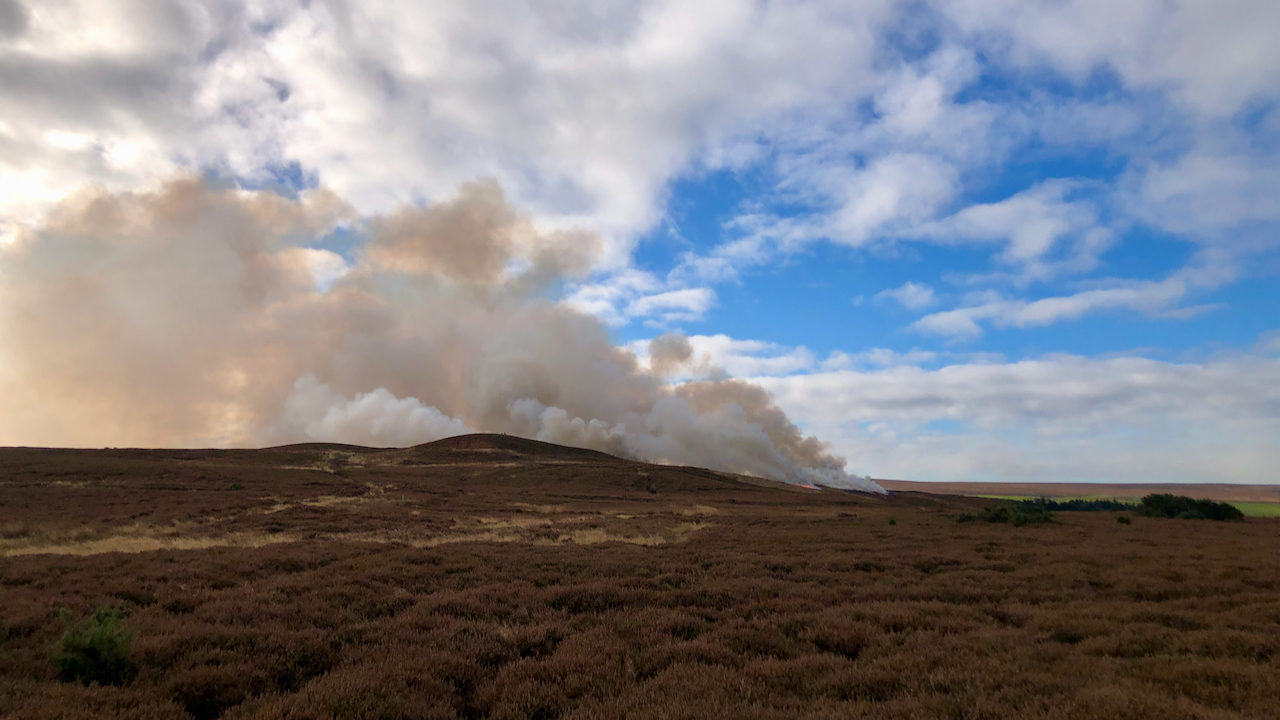I have had a couple of people say to me recently that “controlled” burning of the moors is now illegal.
Well, that’s not quite right.
According to Defra the new regulations introduced last year “will prevent the burning of any specified vegetation on areas of deep peat (over 40cm depth) on a Site of Special Scientific Interest that is also a Special Area of Conservation or a Special Protection Area unless a licence has been granted or the land is steep or rocky“1for, Department. 2021. ‘England’s “National Rainforests” to Be Protected by New Rules’, GOV.UK <https://www.gov.uk/government/news/englands-national-rainforests-to-be-protected-by-new-rules> [accessed 18 October 2022].
The trouble is most of the peat on the North York Moors is less than 40cm thick. It is what is generally referred to as ‘Upland Heathland‘. There is some peat over 40cm, termed ‘Blanket Bog‘, and is located in patches around Urra Moor, Blowoth, Rosedale Head, and Glaisdale Moor. See here for a link to Defra’s Magic Map — the green overlay is ‘shallow’ peat and the buff is ‘deep’ peat. It might be clearer if you played with the density slider on the left.
So despite all the grouse moors being designated sites (SSSIs, SACs and SPAs), most are exempt from a burning ban.
This ‘controlled’ burning is used to encourage young heather shoots on which grouse feed. Typically patches of heather moorland is burnt during the winter months on a 8-12 year rotation.
The consensus is that the burning degrades the peat, releases carbon and gasses into the atmosphere, depletes biodiversity, and is detrimental to the moorland hydrology, increasing rain run off contributing to flooding downstream2‘Habitats Burnt, Drained and Built on for Grouse Moor Management’. 2021. Wild Moors <https://www.wildmoors.org.uk/habitat-damage/> [accessed 18 October 2022].
The shooters are obviously very defensive of the practice with the Moorland Association maintaining that “the most up to date science shows not only does controlled burning not damage peatland, it may have a positive effect on carbon capture“3Gleeson, Janet. 2022. ‘Grouse Moor Burning Sparks Row’, Darlington and Stockton Times (Darlington and Stockton Times) <https://www.darlingtonandstocktontimes.co.uk/news/20179283.grouse-moor-burning-sparks-row/> [accessed 18 October 2022]. I would be interested in reading this “most up to date science”.
The Moorland Association also say that “the Fire and Rescue Service in England supports controlled burning on moorland for the prevention of wildfire, the single most serious threat to the carbon store, as wildfire ignites the underlying peat“4Ibid.. And again, I would be interested in reading a direct source from the Fire and Rescue Service.
- 1for, Department. 2021. ‘England’s “National Rainforests” to Be Protected by New Rules’, GOV.UK <https://www.gov.uk/government/news/englands-national-rainforests-to-be-protected-by-new-rules> [accessed 18 October 2022]
- 2‘Habitats Burnt, Drained and Built on for Grouse Moor Management’. 2021. Wild Moors <https://www.wildmoors.org.uk/habitat-damage/> [accessed 18 October 2022]
- 3Gleeson, Janet. 2022. ‘Grouse Moor Burning Sparks Row’, Darlington and Stockton Times (Darlington and Stockton Times) <https://www.darlingtonandstocktontimes.co.uk/news/20179283.grouse-moor-burning-sparks-row/> [accessed 18 October 2022]
- 4Ibid.

Leave a Reply